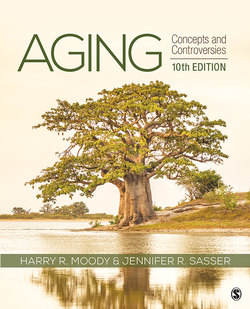Читать книгу Aging - Harry R. Moody - Страница 34
На сайте Литреса книга снята с продажи.
The Immune System
ОглавлениеThe decline of the immune system is another important mechanism of biophysical aging (Muller & Pawelec, 2015). It has even received a name: immunosenescence, which notes that age brings increasing susceptibility to diseases as well as weaker response to treatments. The immune system’s job is to defend the body from invaders like viruses, bacteria, and parasites. To perform this job, it sends a variety of cells, which are categorized as T cells, B cells, and accessory cells, coursing through the body. These cells interact in complex ways to destroy or neutralize antigens, the foreign organisms that trigger an immune response. The cells of the immune system also remove damaged and mutant cells produced within the body, which may become cancers.
With normal aging, the immune system’s ability to fight off invaders and mutants gradually declines; it may even begin mistakenly attacking healthy cells. The process begins at puberty, when components of the immune system, particularly the T cells, gradually lose their efficiency.
The aging immune system leaves the body increasingly vulnerable. No longer does it mount the maximum response to very small doses of antigen; below a certain dose, it may no longer even recognize some antigens. It seems to develop an especially sluggish response to some tumor cells. Thus, infection and age-related cancers, such as prostate and colon cancer, become more likely. In addition, the immune system becomes more likely to attack healthy cells, which may lead to an increase in rheumatoid arthritis and other autoimmune diseases. However, most autoimmune diseases do not seem to be a function purely of age, and genetic predisposition may also play a role. In any case, the gradual decline of the immune system leaves the body more and more susceptible to a wide variety of diseases, each of which takes its toll on the functioning and vigor of the organism as a whole.
